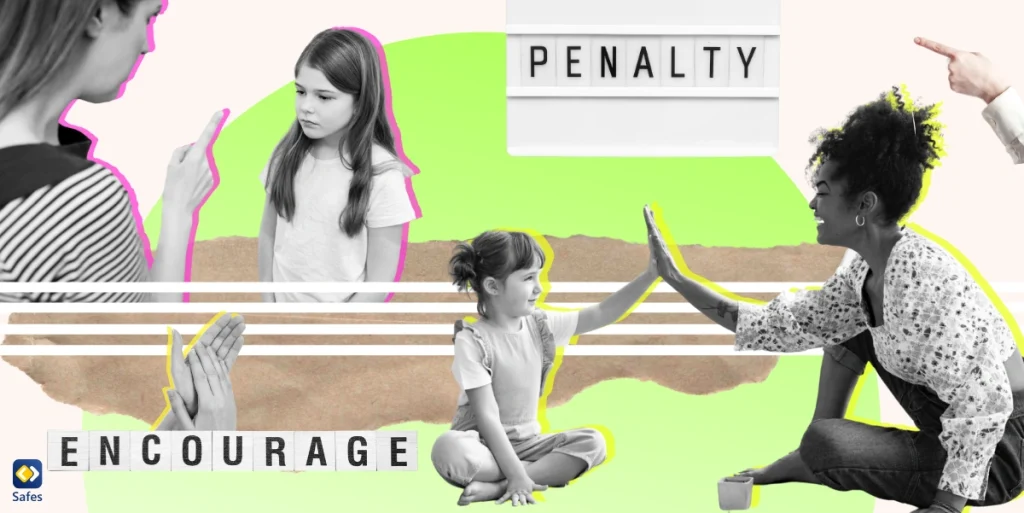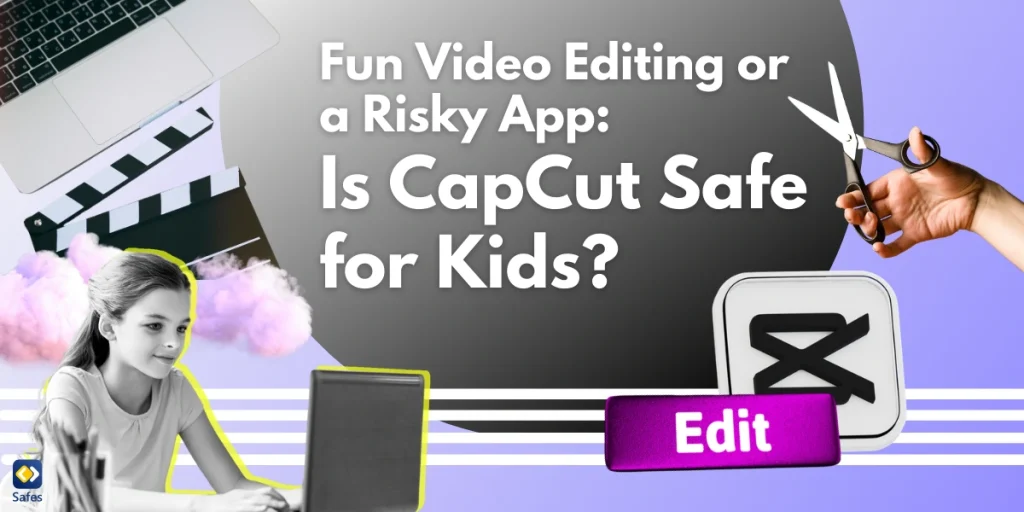Regarding shaping children’s behavior, two key mechanisms come into play: positive reinforcement and positive punishment. Both are strategies employed in various contexts, such as parenting and education, to either encourage or deter certain behaviors. This article will delve into the nuances of these concepts, offering a comprehensive understanding of the workings and effectiveness of positive reinforcement vs. positive punishment.
Download and Start Your Free Trial of the Safes Parental Control App
Understanding Positive Reinforcement
Positive reinforcement is a behavior modification technique that involves the addition of a pleasant stimulus to enhance or promote a specific behavior. The term “positive” in this context refers to the introduction of a favorable condition, not necessarily implying “good.” The idea is simple: when a behavior is followed by a rewarding experience, it is likely to be repeated.
Examples of Positive Reinforcement
To better understand this concept, let’s consider examples of positive reinforcement:
- Positive Reinforcement in the Classroom: A teacher might give a star sticker to a student who completes their homework on time. The sticker (pleasant stimulus) reinforces the behavior of timely homework completion.
- Positive Reinforcement at Home: A child might receive extra playtime (pleasant stimulus) for cleaning their room (desired behavior). The added playtime serves as a reward, encouraging the child to maintain a clean room in the future.
The Psychology Behind Positive Reinforcement
The principle of positive reinforcement finds its roots in operant conditioning, a concept proposed by the renowned psychologist B.F. Skinner. Operant conditioning suggests that behaviors followed by favorable outcomes are likely to be repeated, thus reinforcing them.

Benefits and Drawbacks of Positive Reinforcement
Positive reinforcement can be an effective tool for behavior modification, offering several benefits, such as promoting self-confidence, fostering motivation, and enhancing your child’s well-being. However, ensuring that the reinforcement is proportionate to the behavior is crucial. Over-reliance on rewards can lead to situations where the individual only performs the desired behavior when a reward is guaranteed, decreasing its efficacy over time.
Exploring Positive Punishment
In contrast to positive reinforcement, positive punishment works by introducing an unpleasant stimulus to discourage a certain behavior. In this context, “positive” refers to the addition of a factor, which in this case is unfavorable or unpleasant.
Examples of Positive Punishment
For illustrative purposes, let’s consider real-life examples of positive punishment:
- In a school setting, a student who repeatedly disrupts class may be given detention (unpleasant stimulus) to deter this non-conducive behavior.
- A parent might scold their child (unpleasant stimulus) for not doing their homework, thus discouraging the child from skipping homework in the future.
The Psychology Behind Positive Punishment
Positive punishment is another facet of Skinner’s operant conditioning theory. The principle suggests that introducing an adverse outcome following an undesired behavior reduces the likelihood of the behavior being repeated, thus serving as a deterrent.
Benefits and Drawbacks of Positive Punishment
While positive punishment can be effective in discouraging unwanted behaviors, it’s crucial to consider the ethical implications. Excessive or inappropriate punishment can lead to negative emotional responses like fear or resentment and may even escalate the undesired behavior. You should strike a balance to ensure the punishment is proportionate to the conduct and does not cause harm.

Positive Reinforcement vs. Positive Punishment: A Comparative Snapshot
Positive reinforcement and positive punishment both aim to modify behavior, but they serve different purposes and elicit different outcomes.
- Reinforcement aims to increase the likelihood of a behavior by introducing a pleasant stimulus (positive reinforcement) or removing an unpleasant one (negative reinforcement). The goal is to encourage the behavior.
- Punishment, on the other hand, aims to reduce the likelihood of a behavior by introducing an unpleasant stimulus (positive punishment) or removing a pleasant one (negative punishment). The goal is to discourage the behavior.
Real-Life Scenarios: Positive Reinforcement and Positive Punishment in Action
To further understand these concepts, let’s explore a few real-life scenarios where positive reinforcement and positive punishment have been applied:
- Classroom Behavior: A student consistently disrupts the class. The teacher decides to employ positive punishment by assigning extra homework (unpleasant stimulus) for each disruption. Simultaneously, the teacher also introduces a system of positive reinforcement, offering praise and recognition (pleasant stimulus) when the student behaves well in class.
- Home Behavior: A child fails to do homework or is at risk of the consequences of excessive screen time because they spend too much time playing video games. The parents implement positive punishment by taking away their game console (unpleasant stimulus). Concurrently, the parents introduce positive reinforcement by offering extra playtime during the weekends (pleasant stimulus) for doing homework on time.
Striking a Balance: Combining Positive Reinforcement and Positive Punishment
While both positive reinforcement and positive punishment can be effective in shaping behavior, utilizing a balanced approach that combines both techniques can often yield the best results. The key lies in understanding when to use each process and ensuring the chosen method is proportionate and suitable for the particular behavior.
Challenges and Strategies for Effective Behavior Modification
Implementing positive reinforcement and positive punishment is not without its challenges. Some individuals may become overly reliant on rewards or punishments, while others may not respond as expected to these techniques.
Effective behavior modification requires patience, consistency, and a clear understanding of the individual’s motivations and responses. In addition, it’s essential to monitor and adjust the approach as needed to ensure its ongoing effectiveness.
Ethical Considerations of Positive Reinforcement and Positive Punishment
Deciding when and how to use positive reinforcement and positive punishment is critical to get the best outcome. For example, overly harsh punishment can result in fear or resentment and may not effectively deter the undesired behavior. On the other hand, overuse of positive reinforcement, particularly tangible rewards, can lead to a situation where the individual only performs the desired behavior when a reward is expected.
Positive Reinforcement and Positive Punishment in Digital Parenting
In the digital age, parenting has evolved to encompass not only the physical world but also the online universe. The principles of positive reinforcement and positive punishment can be effectively applied to digital parenting.
For instance, the Safes parental control app can serve as a tool for positive reinforcement, offering children rewards such as extra online time for good behavior. Similarly, the app can also facilitate positive punishment by limiting access to certain apps or online activities if the child engages in inappropriate online behavior.
Safes offers free trial and paid plans with premium features to protect your child online and offline. Feel free to download it from our website or Google Play and App Store. Also, make sure to read the following resources on how to set parental controls on different platforms:
- Windows parental controls
- MacBook parental controls
- Parental controls on Android
- iPhone parental controls
Conclusion: Positive Reinforcement vs. Positive Punishment
Understanding the principles and applications of positive reinforcement and positive punishment can significantly aid in effective behavior modification. Whether you’re a parent or educator, these techniques can provide valuable tools for guiding and shaping behavior. However, it’s crucial to remember that these are tools, not solutions. They should be used responsibly, ethically, and balanced to support positive behavior change.
Your Child’s Online Safety Starts Here
Every parent today needs a solution to manage screen time and keep their child safe online.
Without the right tools, digital risks and excessive screen time can impact children's well-being. Safes helps parents set healthy boundaries, monitor activity, and protect kids from online dangers—all with an easy-to-use app.
Take control of your child’s digital world. Learn more about Safes or download the app to start your free trial today!




